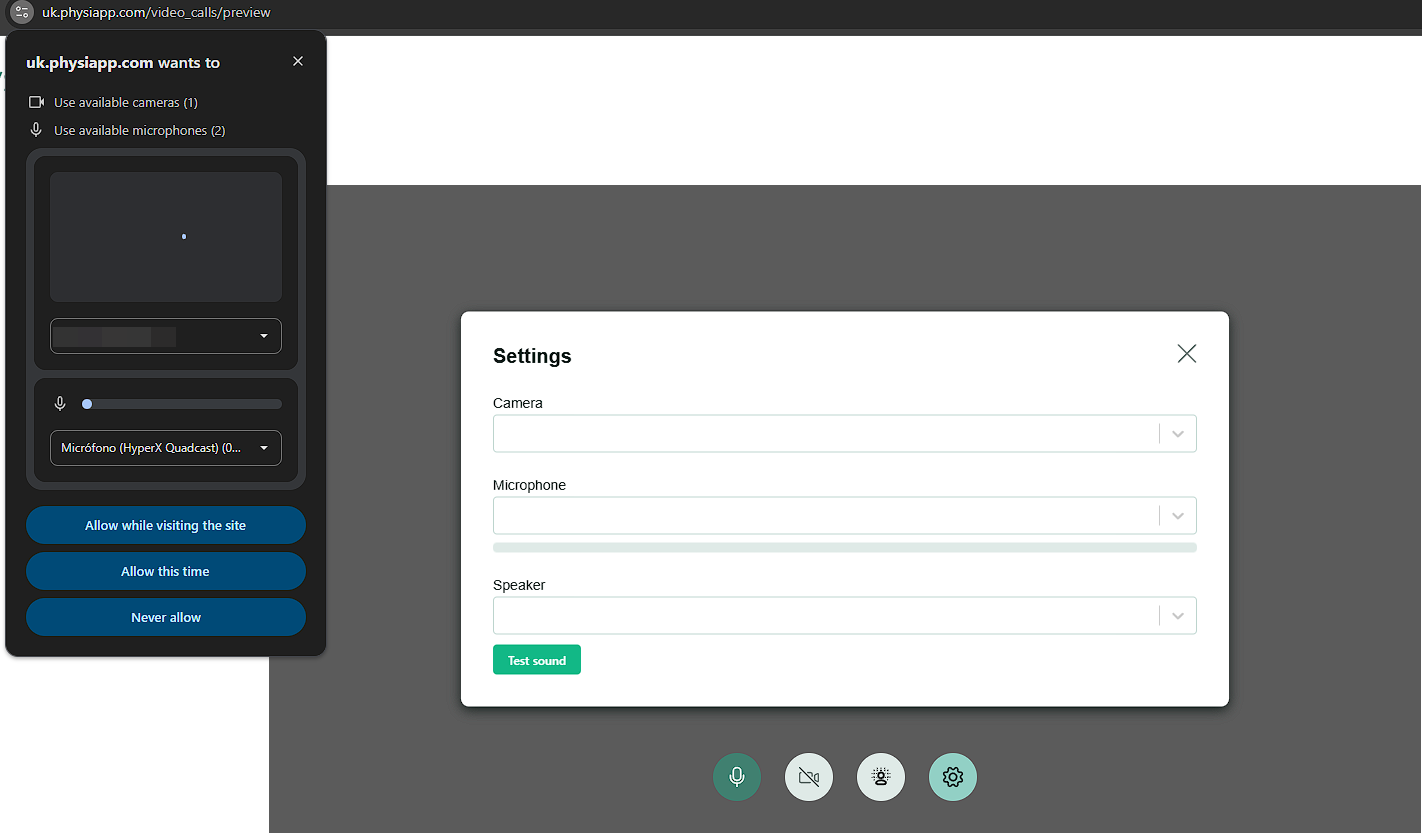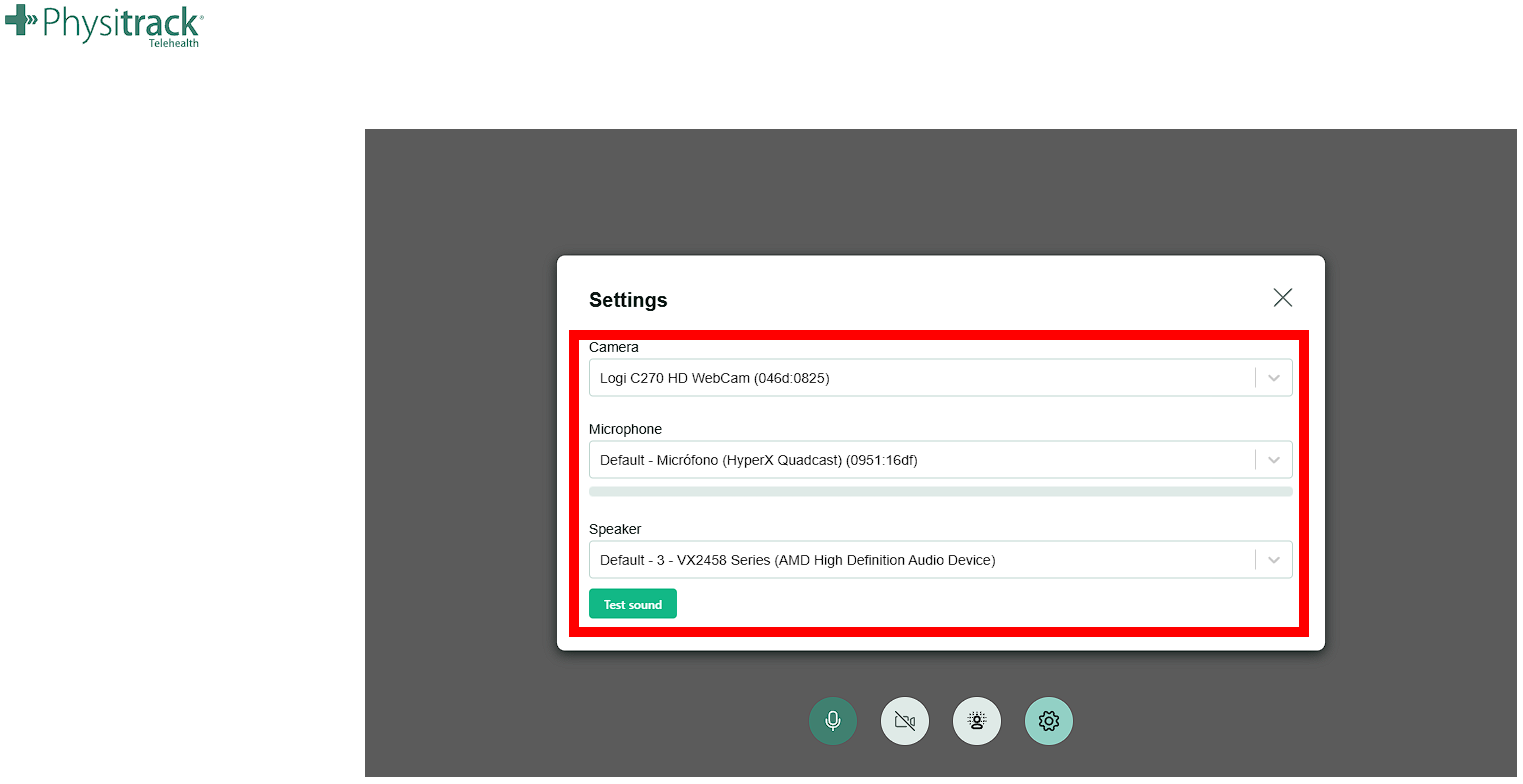Test your system for Telehealth
Have you been invited by your healthcare practitioner for a Telehealth video consultation and want to make sure things are working properly? Follow the instructions below and test your system to make the best use of remote care.
Regardless of how you plan to connect, keep in mind that the image and sound quality of your video consultation depends among others on the capacity of your internet connection. If someone else is using the same internet connection intensively at the same time (think YouTube or Netflix), the image and sound quality of your video consultation may deteriorate or the call may disconnect.
Test a Telehealth Call
To test the video call feature itself:
- Log in to your programme via the web browser. Follow the steps here: Open your exercises in PhysiApp.
- Once logged in, go to your server-specific test link. You can also access your programme directly via the specific server links below, as it will first prompt you to log in.
Use the table below to find the correct test link for your country/server:
| Country/Server | Test Link |
|---|---|
| Australia | https://au.physiapp.com/video_calls/preview |
| Brazil | https://br.physiapp.com/video_calls/preview |
| Canada | https://ca.physiapp.com/video_calls/preview |
| Switzerland | https://ch.physiapp.com/video_calls/preview |
| Germany | https://de.physiapp.com/video_calls/preview |
| Spain | https://es.physiapp.com/video_calls/preview |
| Finland | https://fi.physiapp.com/video_calls/preview |
| France | https://fr.physiapp.com/video_calls/preview |
| Indonesia | https://id.physiapp.com/video_calls/preview |
| Ireland | https://ie.physiapp.com/video_calls/preview |
| Italy | https://it.physiapp.com/video_calls/preview |
| Netherlands | https://nl.physiapp.com/video_calls/preview |
| New Zealand | https://nz.physiapp.com/video_calls/preview |
| Poland | https://pl.physiapp.com/video_calls/preview |
| Sweden | https://se.physiapp.com/video_calls/preview |
| United Kingdom | https://uk.physiapp.com/video_calls/preview |
| United States (USA) | https://us.physiapp.com/video_calls/preview |
Once you have opened your programme and your respective test link your browser may prompt you asking for permission to use your devices to continue with the page make sure to allow this

Once you have allowed access, the page will now display on which settings you which to test the call, it will allow you to select your camera, microphone and speaker. If you wish to change any simply select the respective tab and make the changes.

- Finally, after everything has been selected, simply click on "Test sound" to ensure you hear, you can speak with your microphon,e and the page should reflect the sound level if picked up. And select to activate the camera to ensure the video is working

Telehealth on iOS or Android
- 1
-
Make sure you have the latest version of PhysiApp installed on your device.
- Go to the Play Store (Android) or the App Store (iOS),
- Search for PhysiApp,
- Click or tap on About this app for the latest version details.
- Do you see a button to update the app? Click it to make sure you have the latest bug fixes and updates installed.
- 2
-
Make sure that PhysiApp has access to your camera and microphone.
- When you download and install PhysiApp, your device system will prompt you to allow the app access to your camera and microphone.
- You can also change this permission afterwards. On your Android device, go to Settings, Apps and then choose PhysiApp. Then tap Permissions and go successively to Camera and Microphone to grant permission. On your iOS device, go to Settings, swipe to PhysiApp and then grant (or revoke) permission.
Telehealth in a web browser
- 1
-
Make sure you are using a modern browser, such as Google Chrome, Mozilla Firefox, Safari or Microsoft Edge.
Note: Microsoft Internet Explorer (11) is not supported. - 2
- Make sure you have a working camera and microphone, either in the device you use for your video consultation, or as external peripherals.
- 3
- Any difficulties? Contact us for further assistance.


